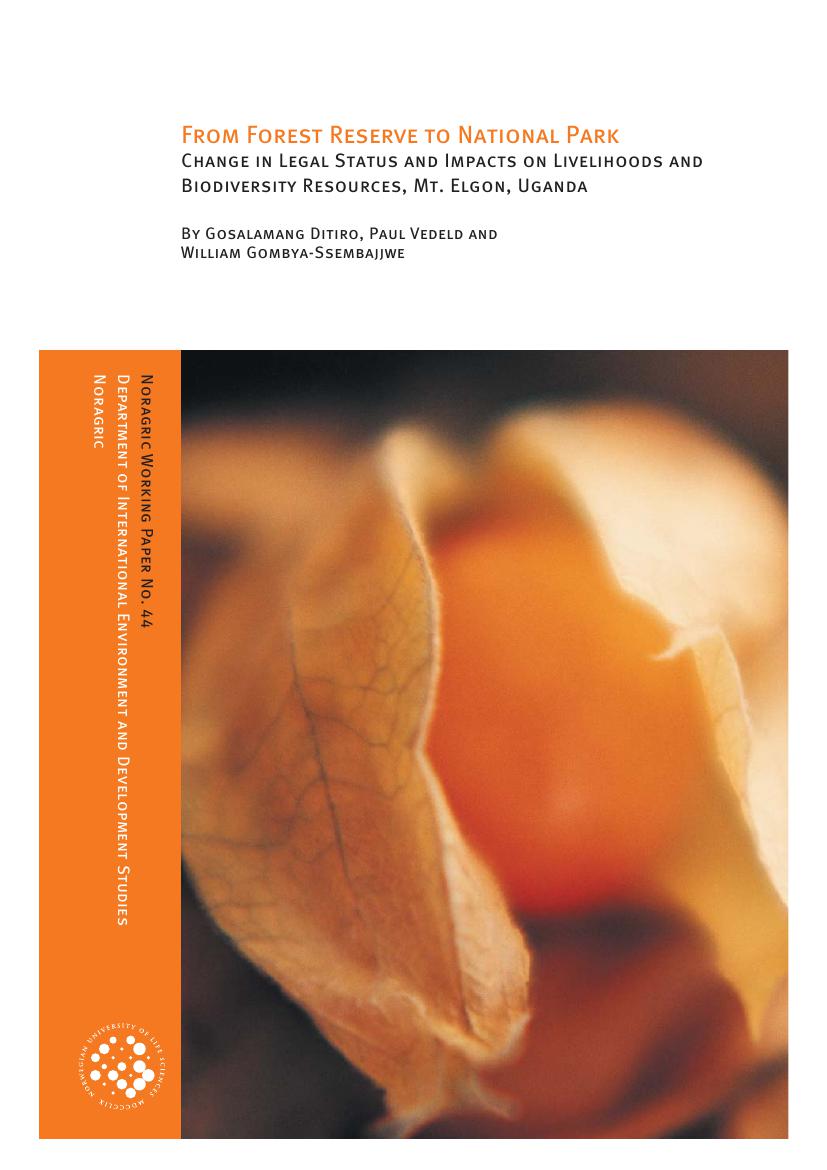Uganda is well endowed with natural resources and some 24 per cent is at present under forest cover. However, as in most Africa countries, Uganda’s forests are in decline. Mount Elgon forest was gazetted under the Forest Department from 1938. The status was changed to a National Park in 1993. Its management was transferred to the wildlife authorities. This report assesses impacts of the change in legal status on people's livelihood by means of a modified household economic model. The authors find that the legal status change led to a redistribution of rights of access and control over natural resources. The change had negative effects on local people's livelihood. 72 per cent of the households used to collect various resources from the forest reserve, while only 30 per cent collect similar resources from the park. Even if the biodiversity conditions are reported to improve after the transition, significant decreases are still observed by the authors in stem tree counts per hectare, indicating that tree-harvesting activities continue in two studied forest patches even after the transition to a National Park. A revised model for collaborative management is recommended where more resources crucial to people's livelihoods are included in resource use agreements. The paper also recommends that increased cooperation is needed between the Uganda Wildlife Authority and the National Forest Authority in the management of forest resources from the park and in outreach activities with local people.
The following recommendations are included in this report:- substantial uncompensated losses in both cash and subsistence incomes must be addressed in a comprehensive way. Compensation strategies must be long-term and should involve both use of forest resources and other, non-forest based measures linked to more general rural development policie;- utilisation of more resources in the buffer zones such as fodder, either through direct grazing or through fodder harvesting and the harvesting of more fuel wood resource should be allowed;- establishing local institutions and making them work requires competence, empathy and patience in order to rebuild battered relationships. A future retreat to the fortress approach as advocated in more recent times, will not do.
